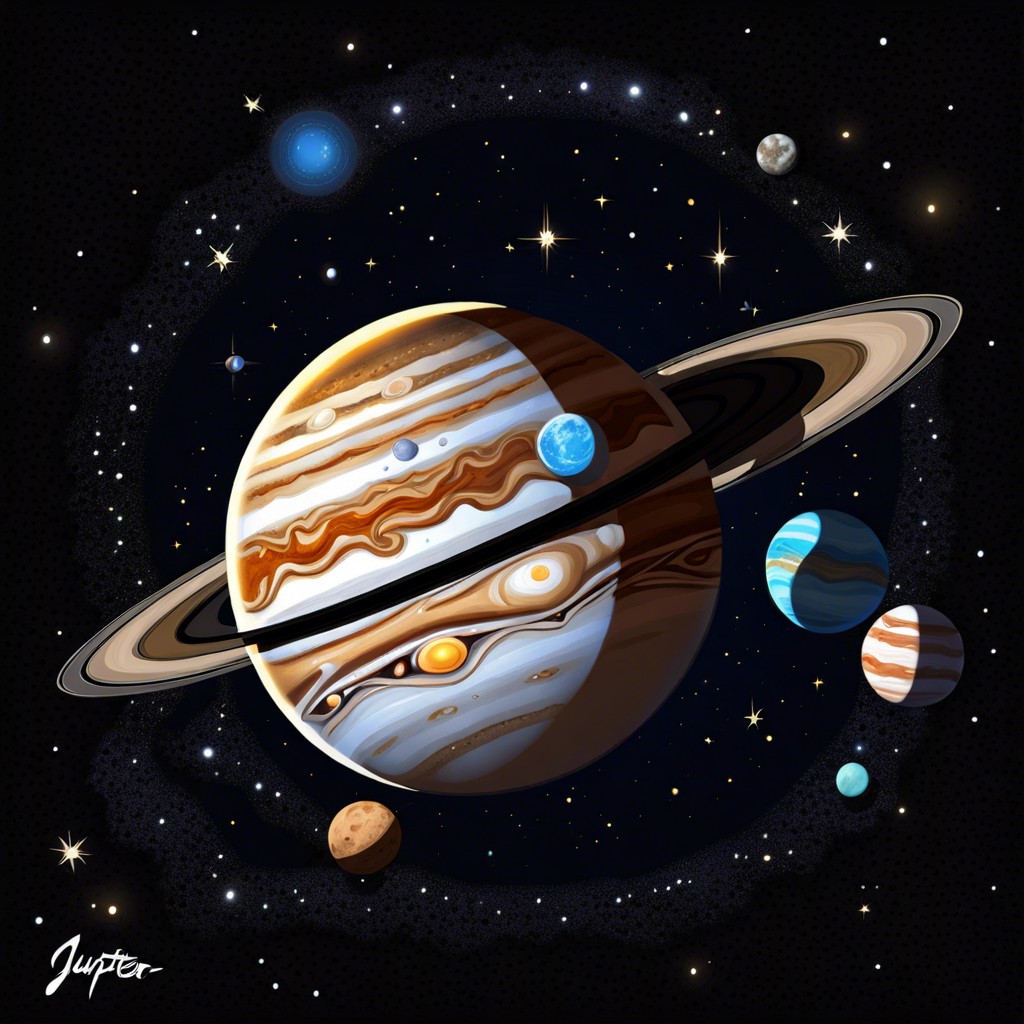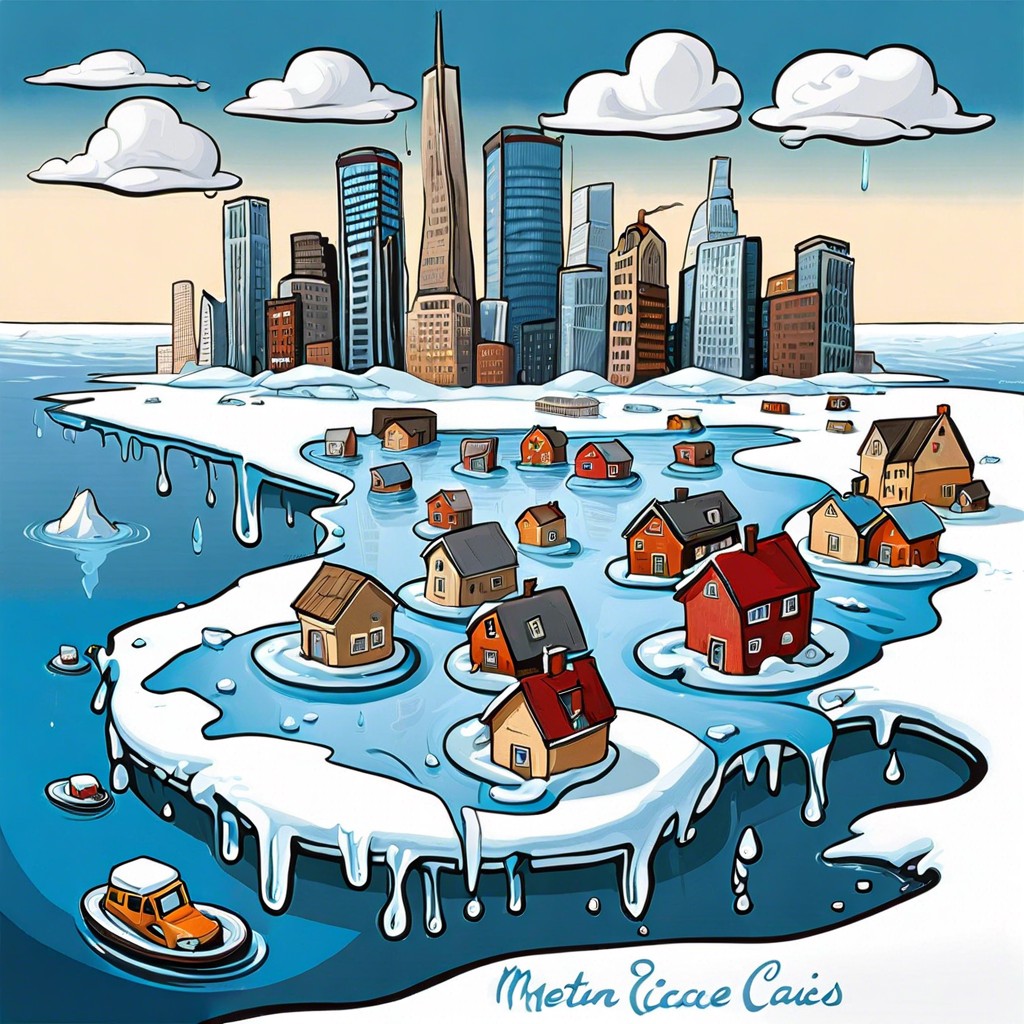Discover how our solar system would change if Jupiter transformed into a star and what implications it could have for life on Earth.
Imagine waking up to two suns in the sky and sunscreen sales skyrocketing; what if mighty Jupiter ignited into a star? Hold onto your telescopes, folks! This cosmic twist would shake up the Solar System’s choreography, dramatically altering Earth’s climate, impacting neighboring planets, revolutionizing stargazing, and sparking new missions for space explorers. Curious? Buckle up for a wild ride through this stellar what-if scenario!
Key takeaways:
- Earth’s protective shield weakened with Jupiter’s transformation.
- Asteroids could wreak havoc without Jupiter’s gravitational pull.
- Two stars lead to unstable orbits and cosmic pinball effects.
- Earth faces environmental upheaval like perpetual twilight and erratic weather.
- Planets experience dual sunsets, orbit changes, and cosmic beauty enhancement.
Impact On the Solar System Dynamics

Gravity is a major player in the solar system ballet. If Jupiter turned into a star, it would have a mega impact on the gravitational dance. First off, Jupiter’s massive pull currently prevents space debris from barraging Earth. With its new star status, that protective force would weaken. Not so great for us Earthlings.
The asteroid belt between Mars and Jupiter might riot. Without Jupiter’s strong gravitational grip, those rocks could go haywire, possibly crashing into other planets. Yikes! And let’s not forget the Kuiper Belt. The outer planets, especially Uranus and Neptune, might see their orbits getting all quirky, which could mess with the ice-packed region beyond Neptune.
Imagine a suddenly two-star solar system—a cosmic game-changer. It would redefine stable orbits, possibly ejecting some objects into the chilly loneliness of interstellar space. Essentially, the solar system might just start playing cosmic pinball, and trust me, nobody wants to be caught in the middle of that game.
Changes in Earth’s Environment and Habitability
Imagine Jupiter igniting into a second sun. While it sounds like the plot of a sci-fi epic, the reality wouldn’t be as glamorous. Earth’s environment would undergo some major changes.
Firstly, night-time? Gone. Our cozy evenings under the stars would turn into perpetual twilight, potentially throwing off circadian rhythms.
Temperature fluctuations might occur. With two heat sources, certain areas could warm up undesirably, while other regions could face bizarre shifts or even cooler climate patterns.
Photosynthesis could get weird. Some plant species might thrive while others could struggle to adapt to the altered light levels, disrupting ecosystems and food chains.
And those beach holidays? Prepare for unpredictable weather patterns. More heat in the system could mean more intense storms, changing ocean currents, and altered precipitation cycles.
This cosmic makeover might seem thrilling, but Earth’s delicate balance would almost certainly be thrown into chaos. Global adaptation would be the name of the game—if not a real-life survival challenge.
Effect On the Other Planets
Imagine Venus and Mars suddenly feeling like actors in a high-budget sci-fi film. If Jupiter ignited as a star, their skies would be painted in a dazzling double sunset worthy of any epic daydream.
Mercury might get a touch of a sunburn, given its proximity to the action. The increased radiation and heat could give poor Mercury even more reasons to wish it was somewhere else.
The asteroid belt between Mars and Jupiter? Total chaos. The gravitational tug-of-war between two stars would send these space rocks into new, unpredictable orbits. Space traffic controllers would have their hands full—or they would if they existed.
Saturn’s famous rings might start to shimmer under the new dual-star sky, enhancing its celestial beauty. One could imagine Saturn striking a pose for cosmic Instagram.
Uranus and Neptune, these distant siblings, might see altered climates, brightness levels, and even slightly different orbits. But hey, a little cosmic shake-up can be entertaining.
All this interplanetary drama might make you grateful Earth didn’t get an unsolicited starring role in the chaos.
Influence On Astronomical Observations
Oh, the chaos it would unleash on our telescopes, our stargazers would be in for a real treat!
For starters, the newfound star status of Jupiter would drastically brighten our night sky. Observing other celestial objects would become significantly harder with another brilliant light source disrupting the celestial ballet.
Additionally, the gravitational tug-of-war between two stars—our Sun and the new Jupiter—could wreak all sorts of havoc on orbits in the outer reaches. That means our beautifully predictable patterns might turn into unpredictable, cosmic rollercoasters.
And space-based telescopes designed to view distant galaxies? They now have to factor in a second energy-emitting giant, making the task of filtering out background noise even more herculean.
Oh, let’s not forget the new opportunities. Imagine recalibrating instruments and rewriting astronomy textbooks! It’s an intellectual goldmine. Plus, more phenomena to gawk at and theorize about—our astronomers will either have the time of their lives or constant, coffee-fueled headaches. Exciting, right?
Potential for New Computer Simulations and Space Missions
Picture scientists huddled around their computers, faces lit up like kids in a candy store. That’s the scene when Jupiter ignites and becomes a star. New computer simulations would be the buzzing hot topic—quite literally. These simulations would delve into gravitational interactions between two stars in one solar system. They’d model the tug-of-war between Sun and Jupiter on our orbit, stirring up questions like, “Will Earth be toast or just slightly more golden?”
Space missions, too, would enter an exhilarating new chapter. Imagine NASA’s next mission: a spacecraft designed to study our new stellar neighbor. Not only have the fuel and trajectory plans, but structural designs would have to shield instruments from intense radiation. Interstellar road trips just got a whole lot more thrilling.
Believe it or not, we’d also refine our search for exoplanets. Dual-star systems like Tatooine from Star Wars are not just sci-fi anymore. Learning from our own “Jupistar,” we’d better understand distant solar systems, enhancing how we spot and study planets orbiting two suns.
As for space tourism? Start packing your bags. Catching a “binary sunset” could be the ultimate vacation snap. But remember sunscreen; you’d need SPF 10,000.




